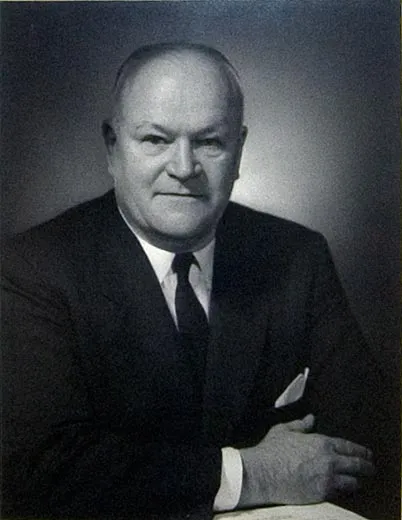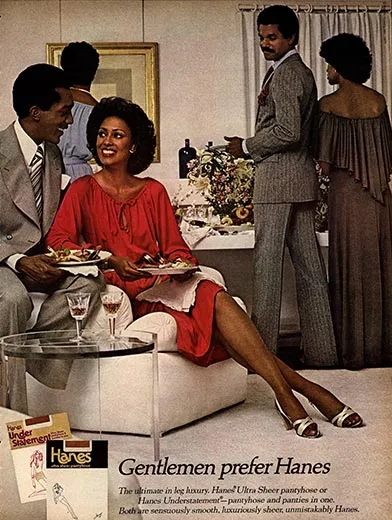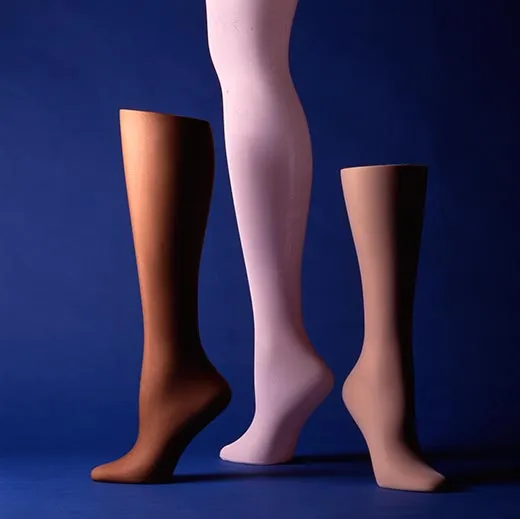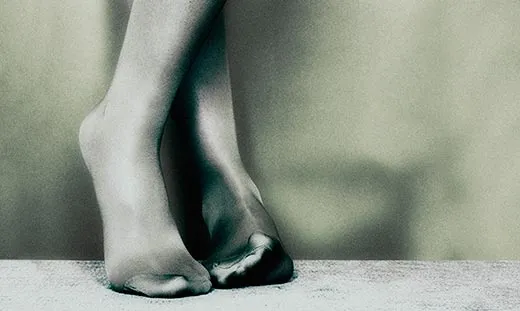50 Years of Pantyhose
Love them or hate them, the once-ubiquitous women’s accessory was a revolutionary invention that helped transform women’s fashion
/https://tf-cmsv2-smithsonianmag-media.s3.amazonaws.com/filer/pantyhose-631.jpg)
The story of pantyhose runs in the Gant family. Since the late Allen Gant Sr. introduced the first pair in 1959, his descendents have watched the garment move from high fashion to optional accessory. Three generations of women have now experienced waist-to-toe stockings, and few would be surprised to discover that a man invented pantyhose. But here’s the twist—it was at the request of his wife.
According to Allen Gant Jr., the inventor’s son, Gant Sr. and his wife Ethel Boone Gant were on the overnight train to North Carolina, returning home from the Macy’s Thanksgiving Day Parade in New York City, when a pregnant Ethel informed her husband that this would be her last trip with him—at least until the birth of their child. It was nothing personal, just a matter of comfort. Managing her stockings and garter belt over her expanding belly was becoming difficult, and being a proper lady, she would not be seen in public without her hosiery.
The year was 1953 and if you were a woman, a night on the town meant either squeezing into a girdle or slipping on a garter belt. Formal dress dictated that females wear such intimate, and often uncomfortable, articles of clothing. How else could you hold up your nylons?
Allen Gant Sr., then running textile company Glen Raven Mills, was inspired by his wife’s lament. “How would it be if we made a pair of panties and fastened the stockings to it?” he asked Ethel. She stitched some crude garments together, tried them on, and handed the products to her husband. “You got to figure out how to do this,” she said. Allen brought his wife’s experiment into the office, and with the help of his colleagues Arthur Rogers, J. O. Austin, and Irvin Combs, developed what they later called “Panti-Legs.” Their product—the world’s first commercial pantyhose—began lining department store shelves in 1959.
“It was wonderful,” a 74-year-old Ethel Gant told the Associated Press 30 years later. “Most people my age loved them from the very beginning and couldn’t wait to get a hold of them. I don’t think we’ve ever changed our minds,” she said.
Allen Gant Sr. had at least one satisfied customer, but the panty-stocking combo did not grab most women’s attentions at first. Though the convenience of not having to wear a girdle or garter belt was a plus, what helped pantyhose take hold was the rise of the miniskirt in the mid-1960s.
For the fashion-conscious woman looking to wear a skirt shorter than stockings are long, pantyhose were the perfect fit. When iconic models such as Jean Shrimpton and Twiggy donned their mini skirts, demand for pantyhose exploded and women flocked to the stores for pairs of their own.
“When Twiggy came along, you couldn’t even bar the door,” says Gant Jr., who now holds his father’s previous position as president of Glen Raven Mills. Simultaneously, new kinds of sewing techniques and fabrics—like spandex—brought the cost of the pantyhose down while increasing the range of sizes that could be offered.
By the 1970s and 1980s, pantyhose were a staple in every teen and woman’s wardrobe. As more women headed into the workplace, sales of pantyhose only grew. In return, hosiery manufacturers continued to market new colors, textures, sizes and technology. “The silkiest ever,” teased one Hanes advertisement. “No one knows I’m wearing support pantyhose,” declared another.
Those glory days came to an end in the 1990s, a shift that Hosiery Association President Sally Kay attributes to a more relaxed work environment. “You saw the fashion pendulum swing more towards the casual,” she says. The industry witnessed a decline in pantyhose sales, and an increase in other products, such as tights and—with the rise of pants in the workplace—trouser socks.
Today, many women no longer feel pressured to don hosiery at all. First Lady Michelle Obama, considered a fashion trendsetter, has placed the garment in the retired pile. “I stopped wearing pantyhose a long time ago because it was painful. Put ‘em on, rip ‘em—it’s inconvenient,” she said on talk show, The View, last year. Valerie Steele, director and chief curator of The Museum at the Fashion Institute of Technology is also not a fan. “It doesn’t look good for pantyhose,” she says, “The long term trend is for people to dress more and more casually.”
Though numbers are down, with 1.4 billion pairs of pantyhose sold in 2008, it doesn’t appear that pantyhose will go extinct anytime soon. For women in more conservative work environments, pantyhose are still a must. Some others still prefer the more traditional option. “Today’s consumer envisions hosiery as more of an accessory,” Kay explains.
Although Allen Gant Jr. doesn’t distribute pantyhose through Glen Raven Mills, his father’s legacy remains. “I don’t think he had any idea pantyhose would change fashion the way it did,” Gant Jr. says. From the runway, to the office, and now stored away in women’s dresser drawers, the garment has gone through several life cycles. But that’s the order of things in the industry. As designer Coco Chanel once said, “Fashion is made to become unfashionable.”
Correction: An earlier version of this article misspelled dresser drawers.
/https://tf-cmsv2-smithsonianmag-media.s3.amazonaws.com/accounts/headshot/joseph-caputo-240.jpg)





/https://tf-cmsv2-smithsonianmag-media.s3.amazonaws.com/accounts/headshot/joseph-caputo-240.jpg)